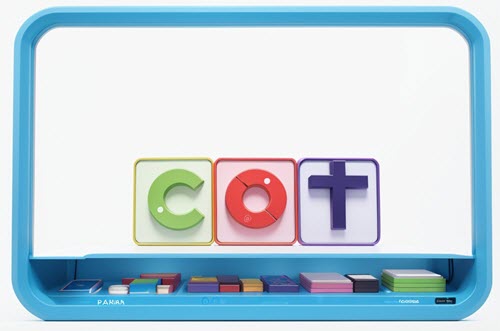What is Decoding in Phonics: Unlocking the Secrets of Early Literacy
“Sound boxes for phonics” might just be the magical tool you’ve been seeking to enhance your child’s grasp of phonics.
As a parent, you’ve likely faced the challenge of turning phonics into a playful and intriguing learning experience for your kid.
This educational journey can be quite a daunting task, both for children who might find phonics boring or hard to understand, and parents, who can struggle to present this vital reading skill in a fun, friendly manner.
Enter the realm of sound boxes.
These educational tools promise not just a solution but turn a complex challenge into an engaging adventure. Breaking up words into individual sounds stimulates children’s interest and allows them to visualize phonics in a whole new way.
Imagine being able to play with sounds, enhance understanding, and at the same time, build a stronger phonetic foundation – all rolled into one fun, colorful package!
- Sound boxes can enhance comprehension of individual sounds.
- They add an element of play to the learning environment.
- Sound boxes can bolster phonics foundational skills effectively.
Get ready to turn your struggle into the joy of victory, one phonetic sound at a time. Make use of the magic of sound boxes for phonics, and watch your child’s reading and comprehension skills soar.

Understanding Phonics and Phonemic Awareness
Many parents might already be familiar with the concept of phonics – the sounds that letters make and the combinations of these letters create words. What might be less known is the term phonemic awareness and its profound connection to phonics and overall literacy.
Phonemic awareness is actually an essential building block to successful phonics learning.
In my experience observing the journey of numerous children learning to read, I’ve seen firsthand the crucial role of phonemic awareness.
Remember, while phonics revolves around written letters and sounds, phonemic awareness is an auditory process – it’s about hearing and manipulating sounds in spoken words.
The ability to segment words into sounds or syllables, to count the number of phonemes in a word (which, interestingly, is not always the same as the number of letters!), gives children a leg up not only in decoding unfamiliar words when reading but also in spelling.
A potent strategy that aids the development of phonemic awareness is the use of ‘sound boxes,’ or Elkonin boxes as they’re also known.
This simple yet effective tool assists students in strengthening their auditory skills by organizing sounds and letters within a visual frame. It directly assists in developing better phonemic awareness, letter-sound correspondence, and spelling skills.
These boxes serve as a stepping stone towards mastering phonics and acquiring literacy skills. A shift in emphasis from the visual to the auditory can thus make a significant difference in children’s early reading journeys.
What are Elkonin Sound Boxes or Word Boxes?
Imagine a row of empty boxes, much like the squares in a comic strip. Each of these boxes represents a sound from the alphabet. If you have a child who is beginning to learn how to read and spell, these boxes can be pure magic!

Here’s how they work: when a child is given a word, instead of taking it at face value, they break it down into the sounds each letter or group of letters make.
So, for the word ‘cat’, you’d have three boxes – ‘c’, ‘a’, and ‘t’. The child associates each box with a sound, so when they hear the ‘c’ in ‘cat’, the child will put the corresponding letter in the first box and so on.
Sound boxes are simply an auditory tool taking on a visual and touch-friendly form. Words that typically dance around in the mind unnoticed are drawn into focus, dissected, and examined. This way, the child not only hears the sounds but sees and touches them too!
But what makes these boxes extra special? Research shows they’re not just another teaching fad.
Sound boxes help the brain permanently retain words by using a process called orthographic mapping. This is where the child segments and matches the sounds they hear to the possible letters.
So, over time, unfamiliar words metamorphose into instantly recognized sight words.
In essence, sound boxes turn learning phonics into an engaging puzzle, adding a multisensory element that underscores the relevance of each sound in a word.
Imagine handing over this newfound love for phonics to your child – priceless, isn’t it?
Benefits of Using Sound Boxes in Phonics Instruction
- Sound boxes, have a research-based history of efficacy in literacy instruction for nearly 60 years. They are effective tools in helping elementary students acquire phonemic awareness, letter-sound correspondences, and spelling skills, according to Ross and Joseph’s findings.
- These boxes aid students in articulating sounds more fluently. They transform learning into a multi-sensory experience, enhancing engagement and knowledge retention.
- Sound boxes enhance phoneme segmentation and phonological awareness, forming a solid basis for reading and writing skills.
- They offer an authentic letter-to-sound mapping experience. This visual aid makes phonics learning engaging and practical.
- Using sound boxes improves not only spelling skills but also reading skills. The comprehension of the relationship between letters and sounds serves as a fundamental stepping stone to fluent reading.
- Sound boxes make learning interactive and fun. I’ve found my students to be more interested and involved when I integrate these boxes into my lesson plans. They enjoy the hands-on experience of physically segmenting and blending words to understand their construct.
- Learning through sound boxes isn’t limited to classrooms alone. My own kids enjoyed the activity when I introduced them to it at home. It’s a simple yet strategic game that enhances their phonetic understanding.
- The beauty of sound boxes lies in their versatility for learners of different proficiencies. They serve as quick reinforcements for phonetics instruction and readily accessible interventions for older students needing phonics remediation.
- Sound boxes take the complexity out of learning to spell by breaking it down into manageable portions. Students can segment individual sounds in a word, promoting a consolidation of spelling knowledge, which is more effective than rote memorization.
- In addition to aiding independent learning, sound boxes complement group study sessions effectively. As shared in my personal experience, using sound boxes in small groups offers an opportunity for peer learning, enhancing mutual understanding of phonetics and spelling amongst students.
- It is coupled with the practical advantage of utilization across varying proficiency levels. They can be used with learners reading from level A through G, as suggested by Jan Richardson in her book “The Next Step Forward in Guided Reading”.
- They can be used for CV and CVC word study and to help reinforce initial blends, final blends, and digraphs.
- Lastly, sound boxes are especially beneficial for teaching digraphs such as ch, sh, th because these distinct sounds are represented in a single box, making it easier for students to comprehend the uniqueness of these phonemes. This knowledge facilitates a seamless transition to reading comprehension, perfectly encapsulating the strategy mentioned in the Simple View of Reading.
In conclusion, sound boxes foster an interactive and engaging environment for phonics learning.
Their hands-on nature makes them a favorite among learners while their flexibility ensures they can be used effectively across various proficiency levels. As such, they make a worthwhile addition to any phonics instruction session, in the classroom or at home.
How to Use Sound Boxes Effectively
- Understand the concept: Before you introduce sound boxes to your kids, familiarize yourself with the purpose and operation of sound boxes. Research shows that they are essential in building children’s phonological awareness.
- Introduce the Sound Box: Explain to your child that a sound box is a tool to help them articulate sounds, improve spelling and reading skills.
- Start Simple: Begin with simple, short words. Assure your child that each box represents a specific sound.
- Guided Practice: Using a clear example, guide your child in breaking down a word into its respective sounds.
- Encourage Participation: Ask your child to repeat the action with other words. If your child struggles, revisit the explanation and model the process again.
Ensure you take regular breaks to prevent fatigue and maintain the enjoyment of learning. Use these moments as an opportunity to provide positive reinforcement or to discuss the progress made thus far.
When giving feedback, encourage your child’s achievement and effort. If they struggle, remind them it’s a learning process and mistakes help us learn. Providing constructive feedback, balancing corrections and encouragement, is key in maintaining their motivation.
Remember to praise their progress, however small.
Incorporating Sound Boxes in Different Learning Settings
Sound boxes, have proven over time to be a versatile tool for developing children’s phonological skills.
Their adaptability allows them to fit comfortably in diverse settings, from official school classrooms to casual bed-time reading sessions at home.
- Classroom application: Sound boxes make a difference in the classroom where they facilitate the concept of linking speech to print and vice versa. This helps engage students in multisensory learning, offering an authentic letter-to-sound mapping experience whilst building phoneme segmentation and strengthening their phonological awareness. Furthermore, they provide added benefits for English Language Learners notably in their struggle with unfamiliar English vowel sounds, offering repeated practice until they become conversant.
- Home application: Beyond the classroom, sound boxes find relevance in home settings – the comfort of bedtime stories. When children get stuck on a word, writing it down in boxes and asking them to successively blend the sounds not only improves their reading but also increases their self-reliance over time.
Embedded in personal experience and years of research, it’s evident that whether in a formal or relaxed setting, sound boxes provide a fun, engaging and highly effective route to enhance a child’s phonological development.
Transitioning to the DIY realm, constructing sound boxes can be an easy and fulfilling task. Not only does it create an added teaching resource but also provides an opportunity for teachers and parents to custom-make boxes to suit individual learning needs.
Laminated tens-frames, for instance, make ready-to-use sound boxes for blending sounds.
This DIY approach to sound boxes presents a chance to color code sounds for students that need additional support or use manipulatives like counters to move with the sounds, adding an extra layer of versatility to this effective tool.
Tips for Creating Custom Sound Boxes
Creating your own sound boxes can be a fantastic hands-on tool for enhancing your child’s phonemic awareness skills. With just a few simple steps – and a little creativity – you can craft fun and engaging teaching materials right at home.
Here are some tested steps as well as professional advice to guide you:
- Start by taking a blank piece of paper and draw equal-sized boxes on it (5-8 boxes are usually sufficient). If your child is just starting, color-coding the boxes can make it easier.
- To ensure longevity and reuse, place these papers into clear, dry eraser sleeves. Children can write on these with dry-erase markers and easily erase when they’re finished.
- You can also consider getting magnetic letter sets or counters as a physical representation of the sounds. Manipulatives like these can provide a hands-on way for your child to engage with the sounds.
Custom sound boxes can be tailored to your child’s learning pace, style, and preferences, offering a range of benefits.
- This teaching tool allows children to visualize the concept of individual sounds, fostering a concrete understanding of phonemic awareness.
- Encourages independent thinking, prompting kids to self-correct as they work on segmenting, blending and isolating phonemes.
- Allows one-on-one time with parents, fostering closer bonds and customized learning.
Embrace the fun and creativity of this project, using it as an opportunity to learn alongside your child.
Remember, the journey of learning is just as important as the destination.
Enjoy your craft project and happy teaching!
Challenges and Solutions
Teaching phonics sometimes comes with its fair share of challenges both at home and in the classroom. Remember, every learner’s journey is unique; their struggles are not indicators of inability.
To help your students in the classroom, consider deploying Shared Writing.
Here’s how it works:
- Use a large writing surface with well-spaced lines. Light-colored lines and boxes help the black print ‘pop’.
- Model how to stretch sounds of target words, tapping on boxes, and matching the sounds to letters.
- As a part of simulated learning, have a volunteer from the class come up and try it. All the children can participate by tapping on imaginary boxes.
- Lastly, encourage blending of sounds, supporting the development of decoding skills.
- From research conducted in various classrooms, this method has proven significantly effective and students are often more engaged.
For advanced learners, consider using Elkonin boxes with letters to further push their writing and word decoding abilities. Successfully done, you’ll see that your children’s confidence in writing and spelling is noticeably improved.
It’s also important to assess the needs of your students frequently to adapt your teaching style effectively.
It can be difficult pinpointing exactly where the child is facing difficulty, but with the right set of phonics teaching strategies, you can transform these challenges into strength-building opportunities. After all, each struggle, great or small, is a stepping stone towards success in their learning journey.
Assessing Progress with Sound Boxes
It is truly rewarding witnessing your child grow through sound boxes, a simple but effective instructional strategy.
Here are some tips to help evaluate and enhance their progress:
- Use individual learner assessments: By studying your child’s pace and comfort, design lessons that cater to their specific needs. Frequent assessments can reveal areas of struggle and expertise that would enable you to adapt the learning approach.
- Reflect on their growth: Recognize the small wins and celebrate each milestone. This doesn’t just motivate learners but also gives parents joy in seeing the progress.
- Adapt teaching techniques: Elkonin boxes can be tweaked and tailored based on your child’s progress. If your child is struggling with identifying letters in words, it’s encouraged to return the basics of letter and sounds. Further, for those who need extra support, color-coding sounds can be implemented.
In conclusion, regular monitoring, frequent assessments, and the flexibility to adapt are pivotal in teaching with sound boxes.
The journey may be filled with challenges, but also promises enormous rewards in witnessing your child’s advancing literacy skills. Stick through it, and you could be raising a future phonemic expert, paving their way to success in reading and writing.
Conclusion
Sound boxes prove to be a game-changer in phonics instruction, offering a structured and interactive approach to deciphering and assembling sounds in words.
They help children visually segment words into individual phonemes, empowering them in their journey of mastering phonics and language learning.
As parents and educators, there’s a profound joy in watching a child pierce together the puzzle of language, navigating through the complexities of phonics with courage and curiosity. And to witness the spark of understanding as it ignites in a child’s eyes – it’s nothing short of magic. For tools and strategies to further this journey, check out our guide on activities to teach phonemic awareness.
Sound boxes not only enhance this journey but are instrumental in equipping a child with the foundational skills for a successful and enjoyable reading experience.
Key takeaways from this article include:
- The effectiveness of sound boxes as an instructional tool in aiding children to segment and blend sounds in words.
- The empowerment sound boxes provide children with, equipping them with the skills to tackle phonics challenges independently.
- The opportunity sound boxes present for a child’s literacy journey to flourish in an interactive and engaging way.
Remember, each step a child takes in their literacy journey is not just a milestone for them, but a testament to the power of education and the importance of embracing innovative strategies like sound boxes in enriching their learning landscape.

Natalie is a full-time blogger and former elementary school teacher who specializes in helping parents teach their kids to read. With a qualification in Early Childhood Education, over 7 years of experience in education, and a passion for literacy, Natalie provides practical tips, activities, and resources for parents looking to support their child’s learning-to-read journey. She is the proud mom of two young readers and loves sharing her knowledge and experience with other parents. Natalie enjoys spending time with her family, reading, and exploring the great outdoors when she’s not blogging.
